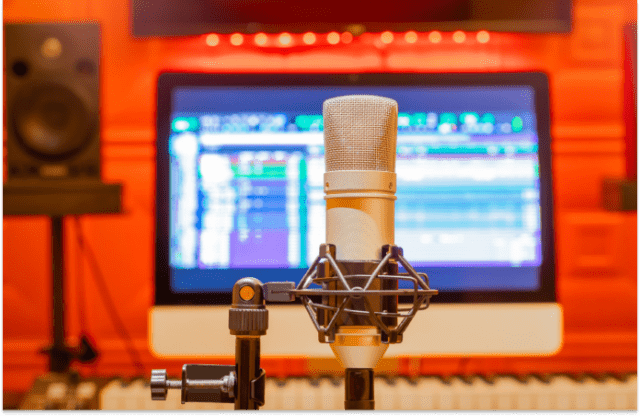In live theatre, the sounds have to be just right from the start. If the sounds are well-designed, it makes your theatre show amazing. But if they‘re done poorly, it can spoil the experience.
With sound design practices, you can find the right balance between the voice of artists and background music. And here credit goes to Sound designers- who work with producers to plan the sounds. They think about your play, the place it’s performed, and the equipment to put in action.
Now what is sound design?
In theatre shows, the sounds you hear are subtle yet catchy. It can vary from people talking and background music to special sound effects. When all these sounds are mixed together in a special way, it’s called Sound design.
Sound design practices play a key role in theatrical production. Just think, when your work is done well, most people don’t even notice. They just get immersed, and everyone’s happy. But, when the sound doesn’t quite work, everyone notices.
Now, the catch over here is to “convince” the audience that every sound is indeed coming from this fictional world they’re experiencing.
Alternate version:
Just think when the sound design is done right. It becomes so natural that your audience doesn’t even notices. But when something goes wrong with it, everyone in the room becomes aware of it.
And that’s where sound design plays a key role in theatrical production. Let’s explore how it can level up your theatrical production in three exciting ways:
1. Storytelling in Sound Design
Sound and music will enhance the plot of your play. It will tell your story to create a deeper narrative experience for your audience.
2. Emotional impact
The right sound design practices will evoke memories and emotions. It will allow your audience to feel a stronger connection to the play and experience a range of feelings.
3. Musical flow
Even without a musical soundtrack. The arrangement of sounds can create rhythms that inspire different emotions and enhance the overall experience of the day.
So, this is how your theatrical production can rock with sound design practices to make your show come alive, create a musical ambiance and keep your audience hooked!
But, before understanding sound design, you must be familiar with the two basic sounds for theatrical production:
a) Foley sounds:
They capture everyday sounds like footsteps, doors creaking, or turning pages. They’re so natural that you don’t even notice them, but they make all the difference to make your scenes realistic.
b) Ambient sounds:
On the flip side, Ambient sounds are background noises that add depth. Can you think of traffic, street noises, or the soothing sound of musical instruments? They create the aura and make everything more immersive.
You can use resources like Cinematic Score and Epidemic Sound for restriction-free music and sound effects. Now, finally, let’s take a look over three sound design practices:
- First off, you should be familiar with Mixing. Mixing for a theatrical production is about finding the perfect balance between dialogue, music, and sound effects to create a symphony of emotions.
You can tweak the volume, direction, and spatial effects to crank up your theatre show. If you master mixing skills, you will be able to create captivating moments for your audience. Let’s take a look at how mixing sound design is applied in a theatrical production:
- Spatial Sound Design: By strategically placing sound sources in different areas of the theater, you can create a sense of movement, location, or dimensionality. For example, a character’s voice may sound distant to simulate them speaking from afar.
- Sound Effects and Foley: You can mix sound effects live or pre-recorded to synchronize with the action on stage. This includes footsteps, door slams, or the rustling of paper. It can be done by adding depth and authenticity to the performance.
- Emotional Enhancements: You can select and mix music cues to heighten the emotional impact of key scenes, building tension or creating a sense of nostalgia or joy.
So, this is how you can create a rich and immersive auditory experience that complements the narrative of your stage show.
- Next comes sampling, which is the sound design technique of taking small snippets or samples of existing sounds and using them to create new ones. These samples can be from any source, such as music, nature, or everyday noises.
You can also employ sampling to capture and manipulate pre-recorded audio clips to create unique and immersive effects. By collecting samples of ambient noise, specific objects, or even human voices. You can layer these sounds within the production to add depth and authenticity.
The samples can be edited, modified, and combined to create unique textures and atmospheres that align with the narrative and setting of the play. This design practice allows you to create realistic soundscapes, contributing to the immersion of theatrical production.
- And lastly, practice Underscore. An underscore is subtle background music that goes along with the action in the performance. It’s intentionally designed to be noticed indirectly by the audience. Also, it helps to create a specific mood or atmosphere for a scene.
This sound design practice is about choosing the right music or sounds that match what’s happening on stage. The underscore is like a background that adds more depth, tension, or emotion to the performance.
By timing the music or sounds at the right moments, you can make important parts more intense, build excitement, or create certain emotions in the audience.
It helps create a certain atmosphere and tells the story of the play in a way that grabs the audience’s attention and makes the experience even better.
If you want more sound design tips, then contact Antriksh here. When you reach out, you’ll also get instant access to free consultations that will equip you with personalized solutions and insights for your brand.

